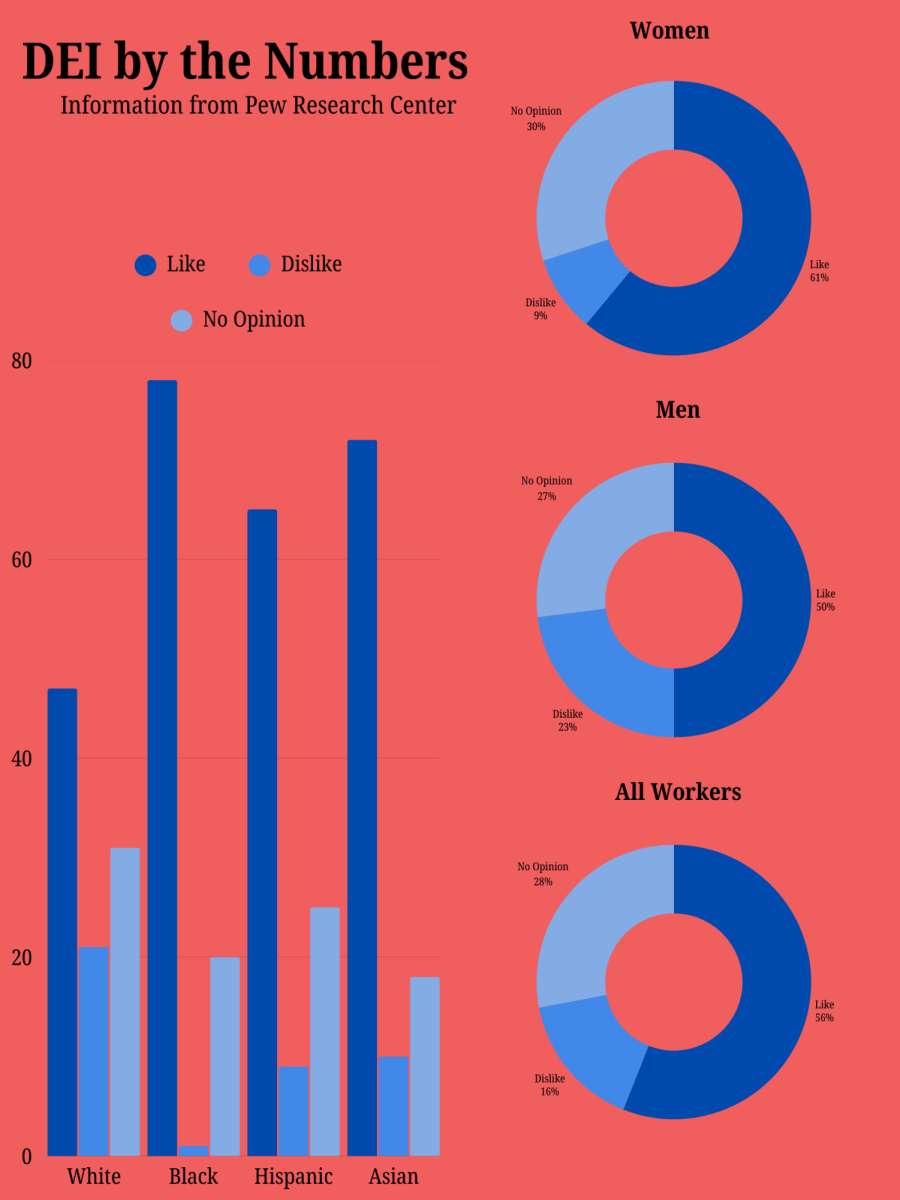As is typical of new presidential administrations, there have been plenty of changes to the US government at all levels, federal and state alike, since President Trump was reelected into office. However, one of the most drastic changes was the elimination of the US Department of Education.
This executive order has raised widespread concern among educators, policymakers, and students. While national outlets like The New York Times and Education Week report on the unfolding debates, the effects are already beginning to ripple down to local school districts like Parkway, where administrators and students are preparing for an uncertain future.
Dr. McCarthy, a longtime Parkway administrator with 29 years in education, reflected on the historical significance of the Department. “Part of the spirit of the Department of Education is raising achievement levels for those who are lower down and ensuring FAPE—free and appropriate public education—for students with disabilities,” he explained. Originally created in the late 1970s, the ED aimed to address the wide disparities in educational quality across different states. Without it, McCarthy warned, the nation risks backsliding into an era of uneven educational access and opportunity.
Although Parkway receives only about 1–2% of its funding from the federal government, McCarthy emphasized that losing that small percentage, equivalent to roughly $3 to $6 million, could have a significant impact. “We’re not talking about ten thousand bucks, but potentially three million or more dollars,” he said. “That’s easily 30 teachers, and that’s not a small thing, especially when schools are already facing financial pressures.”
Beyond financial concerns, McCarthy also spoke about the broader instability the decision could introduce into the education field. “It contributes to the perceived volatility of education,” he said. “Why would a young person want to go into a profession where the rules and supports are constantly changing?”
For Beth Karfs, a 19-year veteran teacher, the elimination of the ED carries a different but equally troubling risk: the potential rollback of student protections. “I saw [the Department] as a stop-gap for taking away protections for students and their resources that maybe isn’t agreed upon at the state level,” she explained. Karfs pointed out that while Parkway might weather the changes relatively well, districts in less affluent areas, especially Title I schools, could see immediate and damaging effects.
“Financial and civil liberties are two separate concerns,” she added. “The financial impact will hit under-resourced schools hardest, but the loss of protections could affect students across all communities, not just those defined by demographics.”
The timeline for these changes varies. Karfs noted that the impact will likely depend on how individual states respond to the elimination, with some areas experiencing faster and harsher consequences than others. “Current culture is not protecting civil liberties to the same extent it was 10–15 years ago,” she said. “That’s why it’s more necessary than ever.”
Dr. Nathan Tyson, Parkway’s Director of Data Management, Research, and Enrollment, also raised significant concerns—particularly surrounding the loss of federally coordinated data collection and research. Tyson, who began his career as a middle school social studies teacher in 1998, highlighted the important role the ED has played in ensuring transparency and access to information.
“The Office of Civil Rights within the ED collects data from school districts and makes that data publicly available,” Tyson said. “These actions can help ensure equal access to education.” He noted that while Parkway’s internal data collection would likely remain intact, the loss of national oversight and publicly available research could have long-term consequences.
Tyson pointed to an April 8 decision by the U.S. Department of Education to cancel pandemic-related ESSER (Elementary and Secondary School Emergency Relief) data collections as a sign that changes are already underway. “These changes are already taking place, at least it feels that way,” he said.
Beyond data collection, Tyson expressed particular concern about the future of national research initiatives. “I’m most concerned with the impact to the National Center for Education Statistics, the Institute for Education Sciences, and the National Assessment of Educational Progress,” he said. While Parkway may have strong local systems in place, Tyson emphasized that no single district can replace the breadth of research and best practices historically coordinated by the ED.
Financial uncertainty is also a looming concern for those who manage district budgets. Dawne Trokey, Executive Director of Finance for Parkway, explained that much of the district’s financial operations are guided by frameworks established by the Missouri Department of Elementary and Secondary Education (DESE), which itself receives guidance from the federal government. “There will be a trickle-down effect,” she said. “We just don’t know yet exactly how it will play out.”
Trokey emphasized that changes at the federal level can impact everything from the structure of financial reporting to the actual flow of grant payments and transportation reimbursements. “It’s hard to plan when you don’t know how the ground rules might change,” she said.
Students themselves are already feeling the uncertainty. Senior Hannah Wolkowitz, who recently navigated the college financial aid appeal process, voiced her concerns about the broader implications of the ED’s elimination. “Knowing that federal oversight on student loans and grants might disappear makes the future feel uncertain,” Wolkowitz said.
For Wolkowitz, who plans to pursue a career in music, financial aid and specialized grants are vital to making college affordable. “There’s a lot of grants in music that help a lot of different paths of music,” she explained. “If this starts cutting off grants, you’re cutting off opportunities.”
Looking forward, there is broad agreement among Parkway’s educators and administrators that while the district is well-resourced enough to withstand some of the impacts, the elimination of the ED could deepen inequities nationally.
“The fear isn’t necessarily about Parkway today,” McCarthy said. “It’s about the larger picture—about ensuring all students across the country have access to a high-quality education, regardless of where they live.”
At the heart of the discussion lies a fundamental question about the role of government in education. Some proponents of the ED’s elimination argue that it represents a necessary return to state and local control. Tyson himself noted, “I’m a strong advocate for local control and subsidiarity.” However, he also acknowledged that federal oversight has historically provided important safeguards.
This tension—between the ideals of local control and the practical benefits of federal support—frames much of the current debate.
Nationally, education policy experts warn that dismantling the ED could leave gaps that states and localities may struggle to fill. Reporting from The Associated Press and Education Week suggests that programs serving marginalized communities, students with disabilities, and English language learners are particularly vulnerable.
While some federal responsibilities may shift to other departments, such as the Justice Department, or to state education agencies, others could be lost entirely. “Some of the oversight functions could move,” Tyson said. “And some could be lost altogether.”
In the meantime, Parkway administrators are preparing to adapt, even as they acknowledge that the full consequences remain uncertain. “We have not achieved everything we aim for yet,” McCarthy said, “but the commitment to providing opportunity for all students is not going away—whether the ED exists or not.”
As the national conversation continues to evolve, local educators and students are left with pressing questions. What does the future of education look like without a federal Department to provide oversight, research, and resources? Who will step in to protect the rights and opportunities that many students rely on?
For now, there are few clear answers—only a sense that, for American education, a major turning point has arrived.








